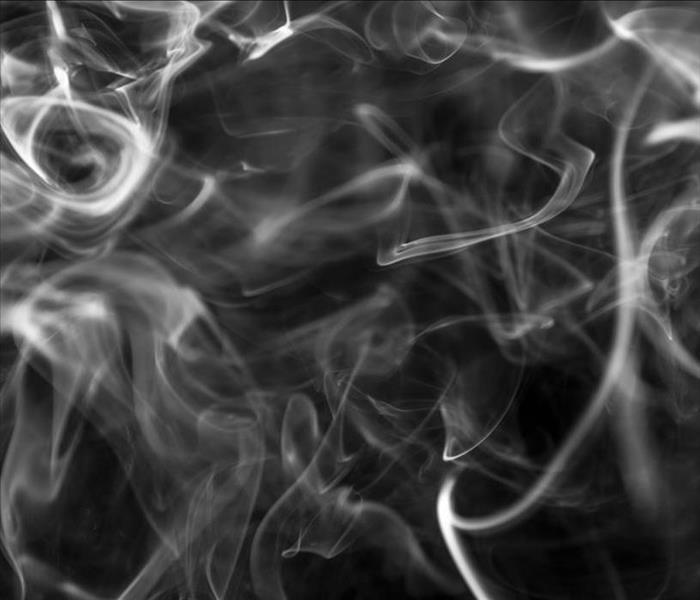Types of Smoke Residue
1/17/2022 (Permalink)
When your home or business experiences a fire, there’s more to the damage than just what’s been directly burnt by the fire. Smoke and soot can cover your home in difficult to clean residue and leave an odor that no one wants lingering.
There are four common kinds of smoke damage: dry smoke, protein residue, fuel/oil residue, and wet smoke. Each of these are caused by the different circumstances of the fire such as the temperature, location and the materials that are fueling the fire. They all also vary in means of restoration process as well.
Dry Smoke – Fires that are fast burning and high temperature are what creates dry smoke. These fires are typically fueled by paper or wood. It has a powdery texture that makes it slightly easier to clean than some other kinds of smoke residue, however this same texture also makes it easy to fall into porous materials. This can make the odor harder the fix as even when the house appears clean the particles responsible for the smell are trapped inside the porous materials of your home. Fortunately, the odors of dry smoke are not as strong as some of the other smoke odors and a professional remediation company can easily handle these unwanted smells.
Protein Residue – This kind of smoke damage is caused when organic materials evaporate during a fire with low heat. Most commonly when there is an accident in the kitchen and a cooking fire happens. This residue, while there’s not any noticeable soot or streaking, can still permanently discolor finished surfaces with a yellowish-brown residue. Unfortunately, the smell that is left behind is also pretty unpleasant and can easily fill your home if left.
Fuel/Oil Residue – While fuel/oil fires are not all that common in homes, furnaces can have what’s called a puffback where the soot and smoke from inside the furnace are blown back into the house instead of out the chimney. This residue is very sticky and dense making it difficult to clean up as well has carrying a particularly unpleasant smell that can run belongings and furniture if not treated promptly and properly.
Wet Smoke – This is typically caused by the thick black smoke that comes off of low-heat, smoldering fires fueled by rubber or plastics. The smoke is very sticky and dense, easily covering your house in a heavy coating of offensive smelling residue. This smoke residue is also prone to smearing making it difficult to clean up without special equipment and proper techniques.
SERVPRO of Chesapeake North knows that trying to get back to normal after a fire in your home can be difficult. That’s why our team constantly trains to help ensure that we are using the latest techniques in fire damage remediation and make your home’s fire damage “Like it never even happened.”






 24/7 Emergency Service
24/7 Emergency Service
